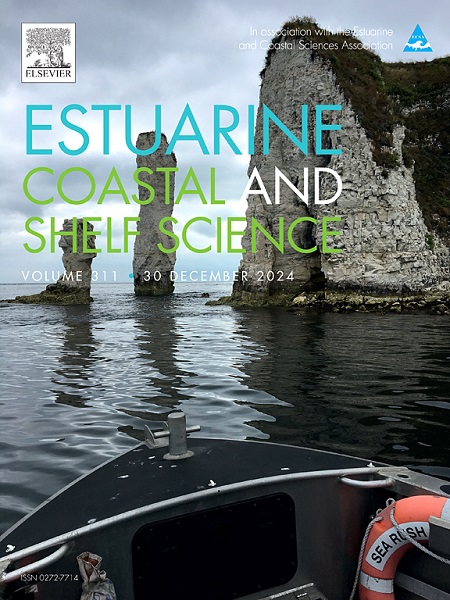Origin of Rhithropanopeus harrisii (Crustacea: Panopeidae) invasion on the Southwest Atlantic coast
IF 2.6
3区 地球科学
Q1 MARINE & FRESHWATER BIOLOGY
引用次数: 0
Abstract
Exotic species can have large impacts on the communities and ecosystems where they are established. Understanding the invasion routes and the processes that allow the establishment of these exotic species is necessary to minimize their impacts. Genetic tools allow the comprehension of dispersion patterns, which is fundamental to forecasting the propagation of invasive species. The mud crab Rhithropanopeus harrisii is native to North America but has invaded different water bodies around the globe in the past century. To clarify the invasion routes and the population source of the mud crab in Lagoa dos Patos (Brazil), a partial region of CO1 was used and compared to sequences extracted from individuals from Europe and North America. The haplotype diversity found in Brazilian, European, and western North American samples was lower than that in the Gulf of Mexico and eastern North America (native areas). The genetic distances of the 11 analyzed populations were high (Phi-st > 0.8), and the shortest genetic distance was found between southern Brazil and North Carolina (eastern United States). Our results suggest that the population from North Carolina was the source of the Brazilian population, and the ballast water of ships that arrived at Rio Grande Port was likely the vector of this invasion.

求助全文
约1分钟内获得全文
求助全文
来源期刊
CiteScore
5.60
自引率
7.10%
发文量
374
审稿时长
9 months
期刊介绍:
Estuarine, Coastal and Shelf Science is an international multidisciplinary journal devoted to the analysis of saline water phenomena ranging from the outer edge of the continental shelf to the upper limits of the tidal zone. The journal provides a unique forum, unifying the multidisciplinary approaches to the study of the oceanography of estuaries, coastal zones, and continental shelf seas. It features original research papers, review papers and short communications treating such disciplines as zoology, botany, geology, sedimentology, physical oceanography.

 求助内容:
求助内容: 应助结果提醒方式:
应助结果提醒方式:


